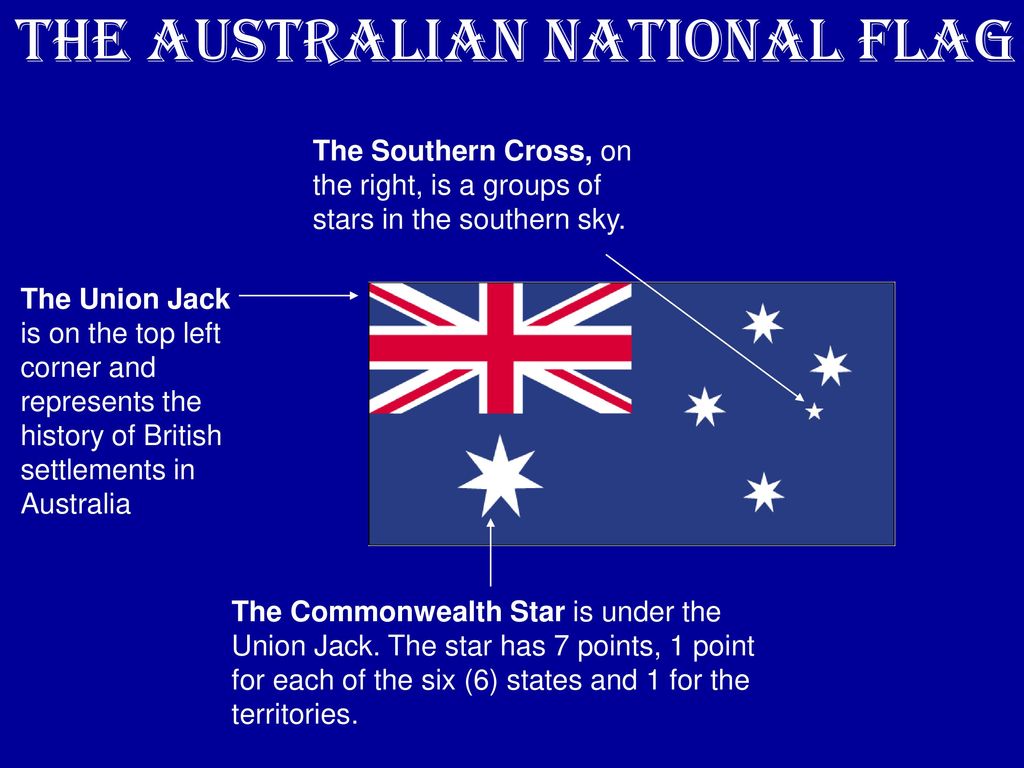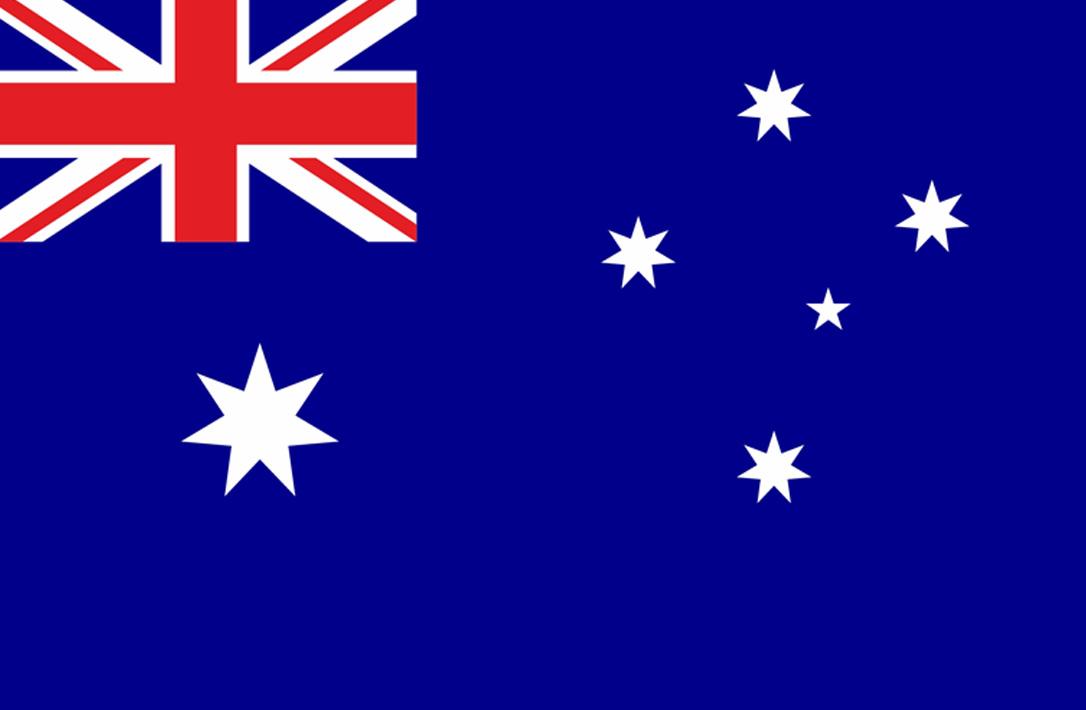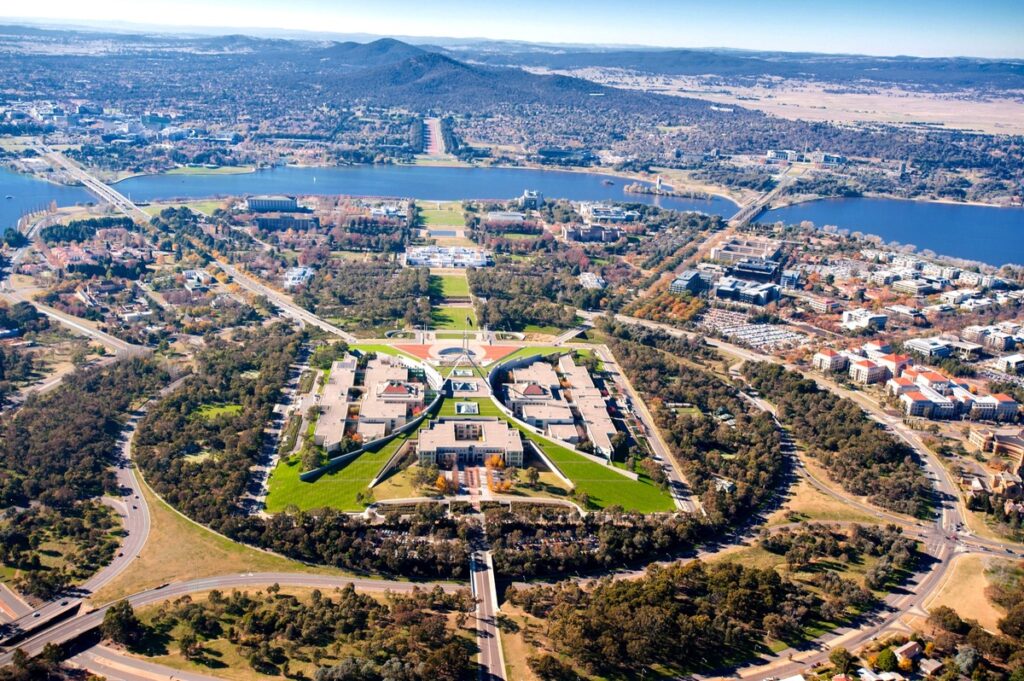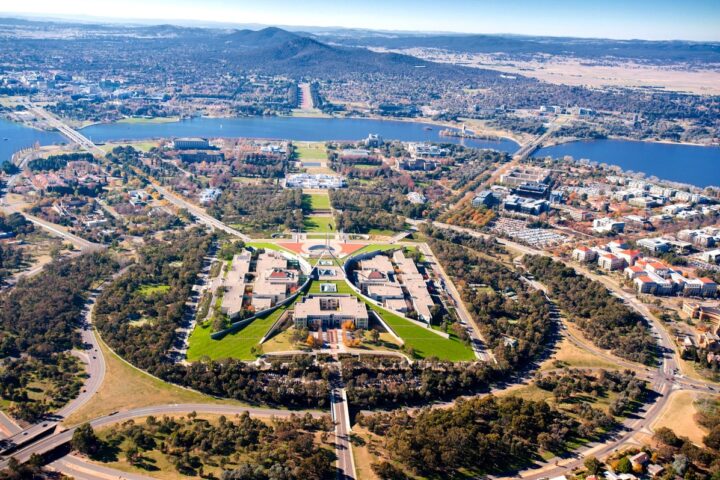History of the Australian Flag
The current design of the Australian flag was chosen through a competition held in 1901, shortly after Australia became a federation of states. The winning design, created by Ivor Evans, was selected from over 30,000 entries. It was officially adopted as the national flag on 3 September 1901 by King Edward VII.
Design and Elements
The Australian flag consists of several key elements
Union Jack: In the top left corner (hoist side) of the flag, the Union Jack represents Australia’s historical links with the United Kingdom.

Stars: There are two main stars on the flag
Commonwealth Star
Also known as the Federation Star, it has seven points representing the six original states of Australia and the territories. The seventh point was added in 1908 to represent future territories and any future states.
Southern Cross
This constellation of stars is a prominent feature in the southern hemisphere’s night sky and symbolizes Australia’s geographical location. It consists of five stars – one small five-pointed star and four larger seven-pointed stars.
Blue Ensign
The background of the flag is dark blue, known as the Blue Ensign, which is typical of many British Commonwealth countries.
Meaning and Symbolism
The Australian flag’s symbolism reflects both its historical context and its geographical position:
- Union Jack: Represents Australia’s historical origins as a British colony and its ongoing ties with the Commonwealth.
- Commonwealth Star: Symbolizes the federation of the states into one nation, with each point originally representing a state and the territories.
- Southern Cross: Represents Australia’s location in the southern hemisphere, serving as a navigational aid and a symbol of national identity.
Fun and Interesting Facts
Design Evolution
Before the current flag was adopted, Australia used several variations of the Union Jack, often with the addition of stars or other symbols.
Controversy
There have been ongoing debates and campaigns regarding the need to change the flag to better reflect Australia’s unique identity, including proposals to remove the Union Jack.
Usage
The Australian flag is flown on many official buildings, schools, and during national events such as Australia Day and ANZAC Day.
Commonly Asked Questions
Why does the Australian flag include the Union Jack?
The Union Jack reflects Australia’s historical ties with Britain, as Australia was initially settled as a British colony.
Can the Australian flag be flown at night?
Traditionally, flags are not flown at night unless they are illuminated. However, there are no legal restrictions on flying the flag at night in Australia.
Are there rules for displaying the Australian flag?
Yes, there are guidelines on how to display the flag respectfully, such as ensuring it is not flown torn or damaged and that it is the correct way up (Union Jack in the top left corner).
What is Australia’s flag called?
Australia’s flag is commonly referred to as the Australian National Flag or simply the Australian flag.
What do the 3 Australian flags mean?
Australia has three official flags: the Australian National Flag, the Aboriginal Flag, and the Torres Strait Islander Flag. Each flag represents different aspects of Australia’s cultural and historical diversity.
What is the famous flag of Australia?
The most famous flag of Australia is the Australian National Flag, which features the Union Jack, the Commonwealth Star, and the Southern Cross constellation.
What are the 2 lines on Australia flag?
The Australian flag does not contain any distinct lines. It primarily consists of stars, including the Union Jack and the stars of the Southern Cross constellation, set against a dark blue background.
What is Australia famous for?
Australia is famous for its natural wonders like the Great Barrier Reef and Uluru, its unique wildlife such as kangaroos and koalas, its sporting achievements, and its multicultural society.
Why is the Australian flag blue?
The blue color of the Australian flag (specifically dark blue, known as the Blue Ensign) reflects its British colonial heritage, as many British Commonwealth countries, including Australia, adopted blue ensigns as their national flags.
What is the color code for Australia?
There is no specific universal color code for Australia as a country. However, the national flag of Australia primarily uses dark blue (Pantone 280) for its background and other specific colors for its elements.
How old is the Australia flag?
The current design of the Australian flag was officially adopted on 3 September 1901, making it over a century old. It was chosen through a national competition shortly after Australia became a federation of states.
- Austria Major Trade Partners - July 2, 2024
- Austria Major Exports - June 29, 2024
- Austria Flag and Meaning - June 29, 2024








